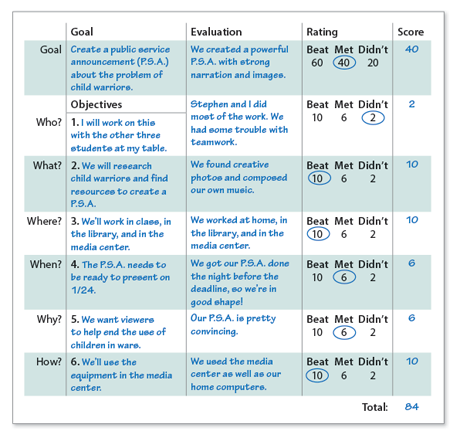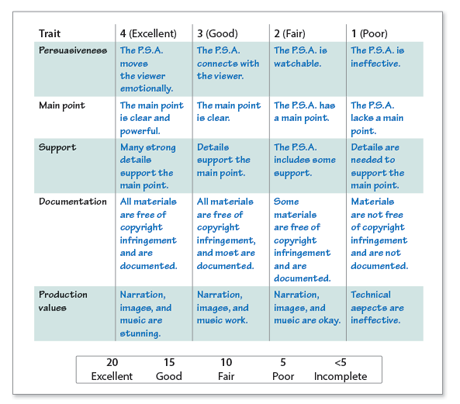Evaluating
When you evaluate something, you determine its value or worth. To do so, you judge the thing using a set of desired qualities.
Building Basic Rubrics
A rubric lists the qualities you desire and provides a scale for rating each. The basic rubric below works for any project. Simply write your project goal in the top left box and answer the 5 W’s and H in each box below (objectives). Then evaluate, rate, and score the goal and objectives in the final three columns.
Basic Rubric for Global Crises Project

Your Turn Create a rubric for a project. Write a goal in the top left box, answer the 5 W’s and H, and evaluate and rate each. (Go to thoughtfullearning.com/h22 for a template.)
Building Advanced Rubrics
You can create a more advanced rubric by listing each desired quality or trait in the first column and indicating what each rating and overall score means.
Advanced Rubric for Global Crises Project

Your Turn Choose a project to evaluate. Create a rubric like the one above. List key traits and define each level of performance. (Get a template at thoughtfullearning.com/h23.)
Using Rubrics
Rubrics have numerous uses throughout the inquiry process.
- Planning: Rubrics define your goal and indicate what success will look like.
- Improving: Rubrics help you assess and improve your completed work.
- Presenting: Rubrics keep you on track and assist in your final assessment.
Your Turn Use one of the rubrics you created on these two pages to plan, improve, or present a project.
